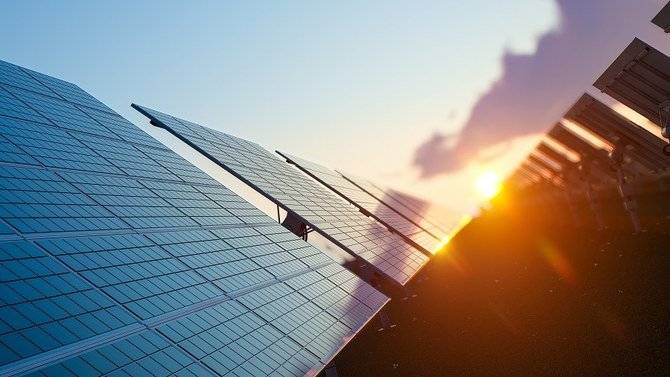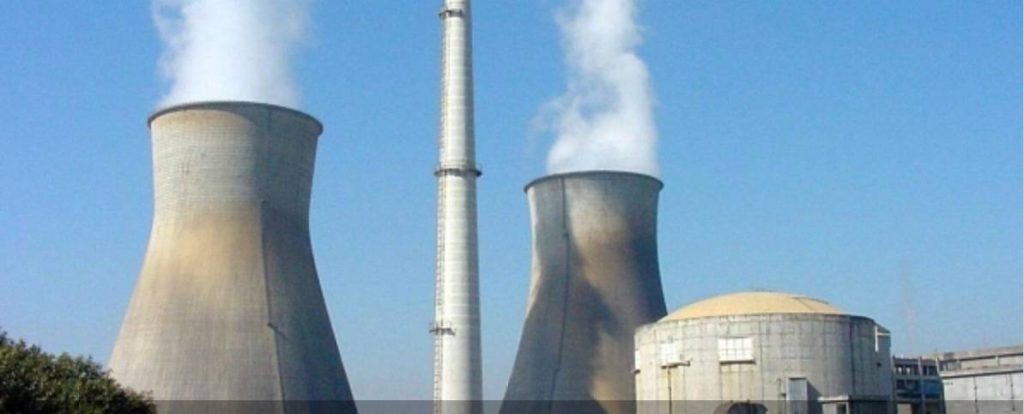Floatavoltaics – or floating power plants – are the buzzword in the energy sector this month…reports Asian Lite News
Photovoltaic is a word we can’t escape when we talk about solar energy. However, what’s making a buzz in the energy spectrum in April 2023 is floatavoltaic – solar panels or photovoltaics mounted on a structure that floats on a body of water.
In line with this fairly nascent technology comes the Union Ministry of Power’s statement on March 3 mandating all new thermal power plants, starting commercial operations after April 1, 2023, to ensure that 40 percent of their total power production comes from renewable energy.
Being touted as the next big thing in the renewable energy world, the encomiums for floatavoltaic come from none other than Nature, the British weekly scientific, peer-reviewed research in its March 2023 edition. Floating solar panels placed on reservoirs around the world could generate enough energy to power thousands of cities, the science weekly stated. Incidentally, India stands fourth globally in Solar Power capacity (as per REN21 Renewables 2022 Global Status Report) and floating solar power plants are what the country is titled towards, and for a good reason.
Energy giants are scrambling towards solar power. Three days ago, on April 2, Mohali-based Hartek Group announced starting work on a 22 MW floating solar PV power project on Nangal Pond in Himachal Pradesh. This January, Madhya Pradesh announced its ambitious plan of starting three new floating solar projects worth Rs 7,500 Cr investment, including the world’s largest floating solar power plant over the Omkareshwar Dam in Khandwa. The ₹3000 crore project is expected to generate 600 MW power by 2022-23.
Last year, NTPC Ramagundam made the world sit up when it announced that its floating plant was fully operational. The Ramagundam Floating Solar PV Project at Ramagundam, Telangana, has a total capacity of 100 MW. On July 1, 2022, NTPC certified the project’s last 20 MW of capacity to be commercially operational. Are floating solar projects the power plants of the future? Or is it just the initial euphoria of heliophiles?

Floating solar power plants feature solar panels placed typically on a reservoir or a lake or any water body. It’s a no-brainer why the floatavoltaic is the first love of solar energy experts. This floating technology powered by water’s buoyancy is capable of creating power and conserving water without the need to procure land. The Indian law states that all rivers and streams are public property and the governments yield power over it. That’s half the battle won for energy generators.
Due to the presence of floating solar panels, the evaporation rate from water bodies is reduced. About 32.5 lakh cubic meters per year of water evaporation can be avoided. “The water body underneath the solar modules helps in maintaining their ambient temperature, thereby improving their efficiency and generation. Similarly, while coal consumption of 1,65,000 tons can be avoided per year; Co2 emission of 2,10,000 tons per year can be avoided,” the PSU informed.
The solar modules are placed on floaters manufactured with HDPE (High-Density Polyethylene) material. The system is anchored through HMPE (High Modulus Polyethylene) ropes to the dead weights placed in the balancing reservoir bed. The power is transmitted to the existing switch yard through underground cables. The electrical equipment including inverter, transformer and the panels are also on floating ferro cement platforms. The plant is anchored using dead-weight concrete blocks.
India aims to touch Net Zero Emissions by 2070 besides increasing renewables capacity to 500 GW by 2030, meeting 50% of energy requirements from renewables, and reducing emissions by one billion tonnes by 2030. It’s time power generators renew their ‘hello to Helios’ vows. The future is solar. (India News Network)

‘Nuclear sources to contribute 9% of power by 2047’
Union minister Jitendra Singh, who holds Atomic Energy and Space portfolio among others, on Sunday said that nearly one-tenth (9 per cent) share of electricity is likely to be from nuclear sources by the year 2047 — when India celebrates 100 years of its Independence.
This, he said, would help in getting closer to the commitment of achieving the net zero target by 2070. Minister Singh made these remarks after holding a review meeting with a group of senior scientists from the Bhabha Atomic Research Centre (BARC), Department of Atomic Energy, in Mumbai.
At the COP26 summit in Glasgow in late 2021, Prime Minister Narendra Modi committed to an ambitious five-part “Panchamrit” pledge, including India’s commitment to net-zero emissions by 2070.
India also committed to reaching 500 GW of non-fossil electricity capacity, generating half of all energy requirements from renewables, and reducing emissions by 1 billion tons by 2030.
Further, the Minister said that the other target laid down by the Department of Atomic Energy is achieving a 20-gigawatt capacity of nuclear power generation by the year 2030, which according to him will be a major milestone placing India as the third-largest producer of atomic energy after the US and France.
Citing applications of atomic energy, Minister Singh said one hallmark of the PM Modi-led government is that for the first time, it is being used for applications in sectors like, for example, for increasing the shelf life of fruits like apples and agriculture products, for using latest technologies in the treatment of cancer and other diseases.
By doing so, he said India had shown the world how to use nuclear energy for peaceful purposes. (ANI)

